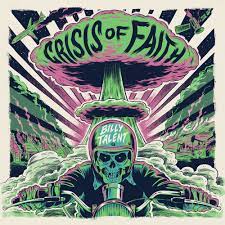If proper CPR involves compressing the chest so much such that the ribcage might break - doesnt that breakage risks a bone puncturing the heart?
Yes, more common however is a rib puncturing a lung. Regardless, the (slim) possibility of that happening is preferable to the certain death that would happen if you didn’t perform CPR
This. When I got my CPR training, the consensus was: if you hear or feal something crack, don’t stop. Messing up is better than doing nothing.
Also, if you’re concerned, don’t be afraid to perform CPR on a female. Their modesty is worth a lot less than their life.
Wow… That’s incredible. What does it matter in that instance if you touch someone „inappropriately“ whatever that even means in this circumstance… I kinda get that in the ridiculous US juristictions where someone could sue you for trying to help you (change that already ffs…)
Imagine having to talk to the family/friends of someone you found on the street:
„Hey I‘m so sorry your friend/wife/girlfirend/mom/daughter died. But at least I didn’t touched her breasts and no one hndressed her for the defibrillator!“
WTF! I‘m incredibly conscious of my body (trying to lose weight currently) but if helping me survive means getting me but naked on Times Square, fucking go for it -.-”
Hearing a crack isn’t messing up. Broken ribs are common in cpr.
External compression isn’t exactly the normal mechanism of blood circulation.
That’s true, my point was just that a broken rib doesn’t mean you made a mistake during CPR.
If you’re doing chest compressions to save someone who has stopped breathing there roughly a 10% chance they will survive but a 0% chance if you don’t So it’s often worth it anyway.
However it does keep the blood flowing and can prevent brain damage until a defibrillator is available which has a much higher chance of saving someone who has stopped breathing.
The heart is also protected by the lungs and breast plate.
Doesn’t the defib stabilise the heartbeat rather than getting it going again?
Yes if the heart has flatlined completely then it won’t be started again by AED. But if they are in cardiac arrest then the heart rate is erratic and doesn’t function normally but can be returned to normal with a defibrillator.
Someone can be in cardiac arrest and have an asystoly or PEA. In fact, whenever someone has an asystoly or PEA they are in cardiac arrest.
Yes, a heart that has completely stopped beating cannot be restarted by defibrillation. It only works in a condition called ventricular fibrillation, when the muscle fibers of the heart are still contracting, but are no longer “in sync”. This causes the heart to twitch chaotically, which is not an effective way to pump blood. And without blood pumping, the heart itself does not receive any oxygen as well, so it will eventually go into a complete flatline after a few minutes of untreated ventricular fibrillation.
The electric shock helps the fibers resynchronize. If you want to see the effect directly, here’s a video:
https://www.youtube.com/watch?v=HCbawp9ZSnY
Be warned, it shows an open chest and an exposed heart, most likely during heart surgery. They are using spoon-shaped internal defibrillation paddles. In the beginning, you can see the heart in ventricular fibrillation. It’s twitching chaotically and not pumping any blood. After defibrillation, it starts contracting rhythmically again.
Yes. Defibrillator is useless if your heart has stopped.
No, its useless if their heart has stopped. Two different things.
Defibrillators are useless when your dead
Fixed.
That’s incorrect.
Someone might be not breathing for a number of reasons. Most likely however, when you find them unconscious & not breathing on the street it’s for cardiac reasons. And then a defibrillator is the one best treatment for that (if the heart has a shockable rhythm that is).
So I’ve done lots of cpr. First off it’s kind of a misconception that you’ll break ribs from cpr. You are more likely to break cartilage than actually break bones and appropriate cpr isn’t going to break bones unless they’re the smallest most frail person and the individual doing cpr is going crazy doing compressions.
Even if you break ribs you’re probably not going to have a displaced rib fracture as there’s muscles and tissue holding those bones in place, it’s pretty rare to have ribs break so bad they risk puncturing organs and it usually involves catastrophic trauma, not what you get from cpr.
I have, thankfully, never done CPR live, but I’m certified to teach CPR by the Danish First Aid Council. So I have a interest in learning from actual practitioners, although I’m obviously not allowed to alter the course.
Where do you stand on ventilation? Currently I have to teach 30:2 mouth to mouth, but I know that there’s talk about skipping ventilation either entirely or at least for adults. The thinking being that children don’t suffer spontaneous cardiac arrests, but that it’s usually a result of blocked airways.
Do you do ventilation and does it make a difference in your experience?
I’ve had a few different First Aid courses and the instructors all have slightly different reasoning. One argument for compression only is potential for passing disease mouth to mouth, the newer courses tend to teach this because sometimes people that don’t feel comfortable doing rescue breaths will fail to do CPR at all. Another is that in cases where you’ve witnessed the event, the blood is already fairly well oxygenated and if medical help has a good response time the benefits of breaths are minimal. The first is more about compression only CPR being better than nothing, breaths are still advised where the rescuer feels comfortable doing so. The second is pretty situational.
So it depends on the setting and patient. Kids tend to have respiratory causes of cardiac arrest so the focus is more on airway management and positive pressure ventilation. Kids don’t generally code just out of nowhere like say a 90 year old might keel over. There’s usually a specific cause and if you can correct that cause they will rebound.
As for adults it’s about the setting. Outside of the hospital we should be teaching cpr only. Especially for lay people. It gets too complicated and they’re too stressed out to remember 30 and 2, 15 and 2. Plus most people have a reserve of air in their airway and lungs that gets circulated with compressions so focusing too much on trying to get breaths in causes too many delays and confusion.
Now for ems you can debate whether they should do cpr only with a non rebreather, a bls airway and bagging, a biad, or a definitive airway. It hugely depends on your protocols, provider availability, and who the patient is.
In hospital we are almost always going to secure the airway during a code to remove that from the equation. We have the resources and it can be done relatively quickly without the need to delay cpr for more than a pulse check in many cases.
CCR is the primary method taught in cardiac care. E.g only compression. This is because the primary issue is preventing clots and making sure you get some blood flow to the tissues. Full oxygenation isn’t as important due to lower oxygen demand of an unconscious person.
Dude if my heart’s not beating, by all means, break my ribs. Broken ribs are better than being dead.
Alive with broken ribs and other injuries > being dead
You can’t do more harm than dead is the idea.
You need to always remember that the patient in such a situation is at the lowest possible point. You cannot make “dead” any worse. So “risks” don’t apply in that moment.
Or, as a paramedic I knew said when someone asked him about the same question: “Whatever happens, it won’t kill him”
Dark healthcare provider humor incoming: When considering these kinds of questions regarding CPR, we actually say, “Well, they ain’t getting any deader.”
CPR actually reverses death. That’s why it only works sometimes and only if provided in a very short window of time after you’ve died. Nothing that is done during CPR is going to make that worse. So yeah, the reality is that it’s a little bit of a controlled free-for-all. It’s called “heroic measures” for a reason.
While we’re on the topic of CPR, I want to address the myth that CPR “almost never works”. It’s great at what it does, which is pumping blood through the body enough to keep vital organs supplied with a bare minimum of oxygen so they can survive.
However, there’s usually a reason why the heart has stopped beating and in most cases, CPR can’t reverse that reason. If the patient is in a car crash and has completely bled out, CPR won’t get any blood back into their system. Or if they’re at the end stage of a terminal disease, CPR can’t magically cure the disease.
But in cases where the cause for the cardiac arrest is simple and easily reversed, chances of survival are much higher. For example, if someone is drowning and you get them out of the water within a few minutes of cardiac arrest, CPR is very effective, with the majority of patients surviving. Here’s a study with 113 patients who were resuscitated after drowning and only 8 were confirmed dead. For 20 patients, the outcome was unknown, but even if they all died as well, that’s still a 75% survival rate.
It’s not that CPR doesn’t work, it’s that outcomes after resuscitation usually aren’t great. The study doesn’t disclose ages or neurological outcomes post-rescuscitation so that limits my interpretation but quick rescue and quick CPR is key in those acute, single reason emergencies. That isn’t to say in an emergency situation you shouldn’t try especially since you don’t know that person’s wishes. There are good outcomes but usually for underlying healthy people who had one thing go wrong. Think the athlete who’s heart stops on the field for some reason.
I’ve admitted at least a thousand people into a hospital through the ER and I tell everyone that it’s not like on TV. If you’re older, sick, multiple chronic diseases, don’t take care of yourself, etc. the chances of any kind of quality of life after CPR is limited. Death is terrifying and I understand them wanting to try but it’s just not realistic a lot of the time. We need better deaths in the US and more in-depth end-of-life conversations with our patients. That should be starting in the PCP’s office. Trying to discuss that with a patient in the ER who’s already scared isn’t ideal. I’ve seen patients with do not resuscitate/do not intubate orders on file change their mind when they’re suffocating and panicking then once they’re more stable immediately change their mind back.
Let’s analyze it this way.
Risk of dying from a lack of blood flow. 100% Risk of dying from a punctured heart from CPR. <100%
Do CPR. Get training. Most of the time, what you hear is cartilage popping.
You do in fact break bones if you’re doing it right. Think of it this way, if you’re doing CPR, the patience is already dead, nothing’s worse than death, so bringing them back in whatever condition is going to be better than what condition they’re already in, which I may remind you, is death
I would argue that ‘any condition’ isn’t really better. If they return as a vegetable, wouldn’t their loved ones ultimately rather remember them as they were before, instead of wiping their shit for a miserable decade?
That may vary depending on the family member. I have seen disputes amongst family as to which treatment is the best course of action.
I suppose, but the risk is low. Especially if your only other choice is to die in a minute without CPR.
The person is dead if you don’t do something. You cannot fuck their day up any worse than it already is.
Don’t think about it, just act!
- Make sure that you are safe. If no one else is taking charge, you are in charge!
- Get emergency services on the phone.
- Clear the airways.
- Get going with 30:2 at 100-120 BPM.
- Get some help from the people around you.
- Send someone for an AED.
- Send someone to meet the ambulance.
You can think about it later.
And to make things clear for people who don’t know it’s 30 compressions, 2 blows of air. For very young children it’s faster though, 15:1.
Depends on the material, I have to teach 30:2 so that people don’t freeze. There’s a special course for people who are responsible for children, they learn a different algorithm, but I haven’t taught that course, so I’d have to read up on it. I believe that it’s still 30:2, but with 5 blows initially.
So I guess, just do 30:2 and don’t worry about the age part.
When I was taking my drivers exam we were taught this in first aid. Am quite surprised other countries don’t have this. We have a somewhat short lecture of 2h and we have to pass written and practical exam in first aid. It’s not huge amount of knowledge but it’s better than nothing. We are taught to recognize burns, lacerations, different type of bleeding, CPR and few other things.
Am quite surprised other countries don’t have this
Careful dealing in absolutes there, a Danish driver’s license requires an 8hr first aid course.
Yeah, I meant more countries, not all of the other.
Here in Amuricastan, we don’t need no stinking class to learn how to drive a 3000 pound death missile. A signature, a 70% on a multiple-choice exam, and a cursory vision check (can you see through your eyes) is all we need for our FREEDUM MACHINES. First aid is for sissies.
There’s so many things, where your country has decided to go “you guys are doing x? We’re doing x^-1 because fuck you, that’s why!”
One of the most baffling things is your driver’s ed. I spent the equivalent of 2.8K USD to get a license, I had to attend
- a medical exam
- an 8hrs first aid course,
- 29hrs of theoretical driving ed (laws, signage etc),
- 4hrs on a closed circuit to learn how to start and park,
- 16hrs of practical driving, and
- 4hrs on a closed circuit with slippery conditions
before being allowed to even attempt a multiple choice exam (which 28% fail on the first try) and then a practical exam.
All the while you can get a license at 16yo, and it’s wham bam thank you mam easy to get. While a Danish teen can’t drive alone before they’re 18 and have spent all that time and money… Smh and don’t get me started on guns, that’s even more different.
🤣
Nope, it’s 15:2 for babies
Depends on who you are listening to. I just checked with the mandated lesson plan (“Basal førstehjælp til børn”, or “Basic first aid for children”, published by the Danish First Aid Council (DFAC), December 2021). I have to adhere to this plan when teaching that course. Among other things, the main differences are:
- 5 blows (page 6) then 30:2 at 100-120 BPM (page 7).
- If you’re alone, then you do 1 min of CPR before calling emergency services (page 7).
It’s the current lesson plan, and the council tends to follow the European Resuscitation Council’s guidelines… Most of the time. While I haven’t read up on the ERC’s guidelines for some time now, I also know that the DFAC may take other aspects into consideration when creating their lesson plans.
I’m a CNA in a hospital, our guidelines are always call for help first, then start 15:2 CPR.
Exactly, as a CNA you have different guidelines, and resources. I used to work as a temp CNA (a job med students can train for in my country), and naturally we were expected to not just do the layman’s CPR.
But the courses I teach are designed for non-medical persons, and they, more than anything, need to not freeze up in the moment. So they are taught to do it one way, and one way only. Is it optimal in every case? Of course not, but in most cases there’s a net positive effect.
I’ve never heard of a punctured heart personally, but I do think it’s possible. A punctured lung is much more common. But both conditions are usually treatable if the patient survives.
CPR does carry some risks, but not doing CPR is guaranteed to be lethal. So any risk (to the patient) is worth taking at that point.
yeah, infant CPR class made me second guess lifeguard training as a teen for a summer job.
I fucking hate the baby dummies. Luckily I don’t have to use them when teaching, as I’ve never taught a course for people with a special responsibility for children. But I still shutter when I encounter one in the dummy depot.
Adults? Sure, we’re all going to die some day. Kids and toddlers? Nope, no thank you, no way.
Training (and presumably the Emergency dispatch) tells you exactly where to put your hands to minimize the risk of anything catastrophic happening because of your effort. You probably don’t need to worry about broken bones; in fact, the sound of bones cracking a bit is a sign that you’re pushing deep enough to actually compress the heart and pump some blood.














